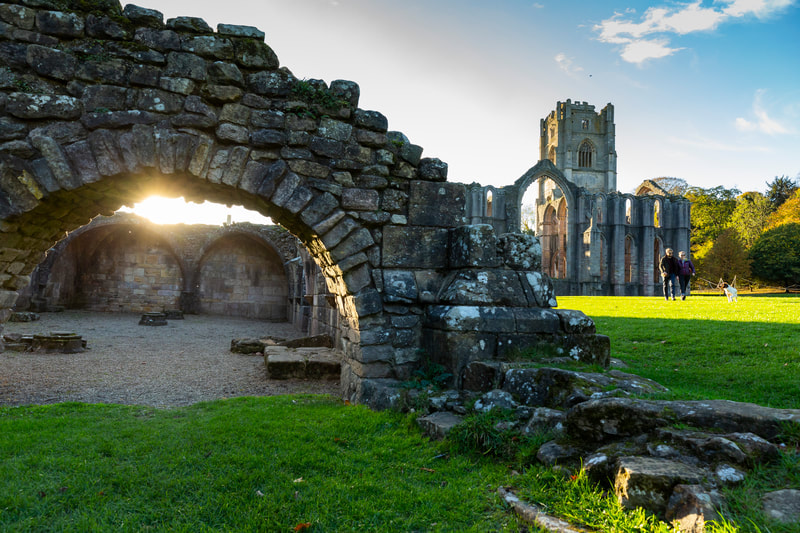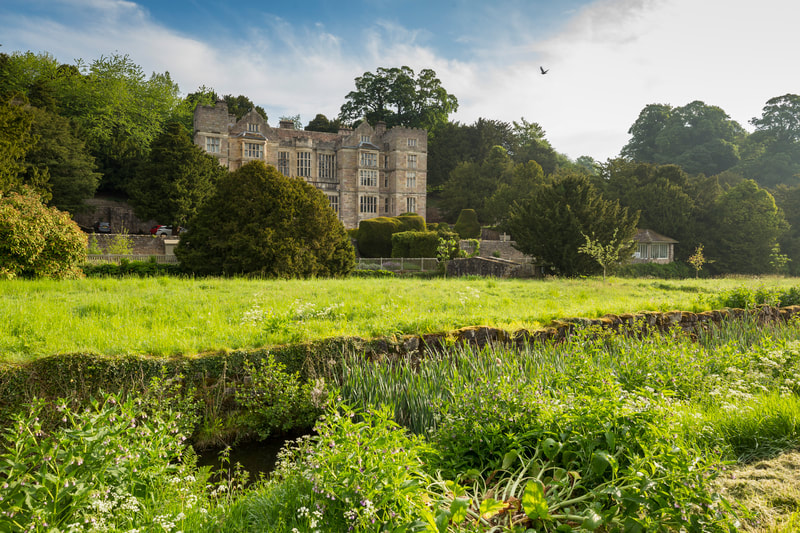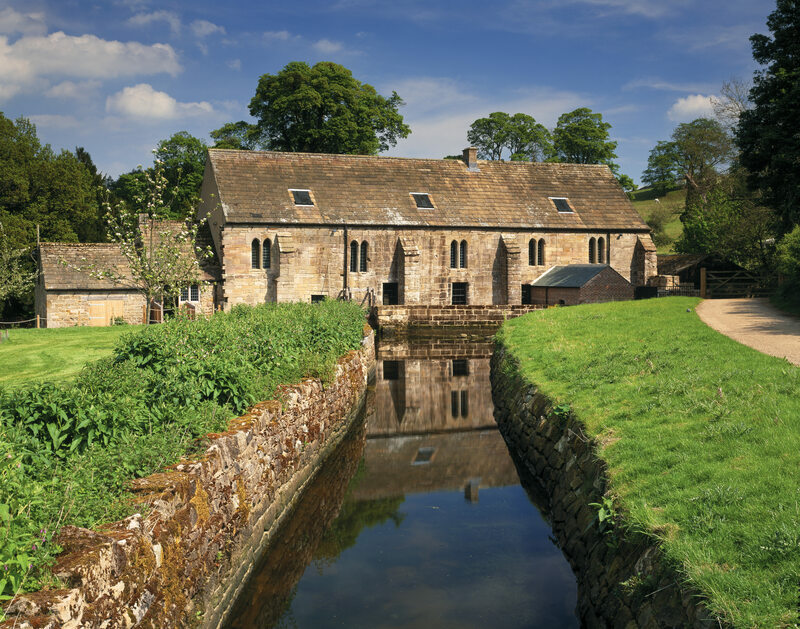Fountains Abbey
|
Did you know that there's a World Heritage Site, right on our Yorkshire Dales doorstep? The stunning Fountains Abbey and Studley Royal water garden became a World Heritage Site in 1986, recognised as a ‘feat of human creative genius,’
The abbey was founded in 1132 by 13 Benedictine monks from St Mary’s in York who decided they'd rather be part of the more austere Cistercian Order. It's incredible to think that out of that wish for a more austere life, came the incredible, and ornate structure of Fountains Abbey, together with a very rich business empire. While the Cistercian monks dedicated their lives to prayer, their lay brothers farmed and worked on other tasks. Over time the Fountains Abbey estate grew, particularly thanks to the wealth created through wool production. Their other commercial interests included horse breeding, lead mining and stone quarrying. Visiting Fountains AbbeyWhen you enter the Fountains Abbey site, head first of all for the Porter's Lodge where you can find out about the history of the abbey and lives of the monks. This sets the context for your visit and makes it easier to imagine the Abbey as it once was. Thanks to Henry VIII, the abbey is in ruins but is still one of the most complete Cistercian abbey remains in England. It's worth joining a a guided tour to make sure you don't miss anything.
The huge nave and Chapel of the Nine Altars are stunning and the heart of the Abbey, but areas like the cellarium really give an idea of the scale of the Abbey's population and its organisation. The cellarium is the vast vaulted area which once served as a food store. It's quite a cold space but spend a little while there and you'll notice some of the carved graffiti, and may recognise it as one of the settings from the BBC Gunpowder series. It's particularly atmospheric and beautiful in Winter when it's candlelit or floodlit and used for carol concerts and other events. The National Trust has worked hard to make sure all members of the family can enjoy Fountains Abbey. It's a very large space to explore which makes it ideal for children who want to run off their energy and play hide and seek. They'll probably enjoy looking out for the prison cells under the abbots house: get them to find the iron ring in the floor to tie up prisoners and teach them two words of Latin: Vale Libertas which means 'farewell freedom'. |
Wool RichBy 1300, Fountains Abbey was a leading producer and exporter of wool. Their extensive lands stretched over to Malham Moor, with connections to many well-known spots such as Kilnsey Park where fish were bred for the monks. It's thanks to sheep trading that Masham has such an extensive market place.
Fountains Abbey had an enormous wool warehouse, a fulling mill and dye-vats, probably using natural materials such as lichen for dye. Over the next years the wool and textile industry flourished. The monks used wool for clothing and bedding and sold it at market alongside lamb, cheese and butter. They even used sheep skins for parchment. In the 14th century bad harvests, sheep disease and the Black Death led to a decline in Fountain Abbey's fortunes and some lay brothers left. Over time dairy farming became more popular. The Abbey's success came to an abrupt halt in 1539 with the Dissolution of the Monasteries ordered by Henry VIII. After that much of the land was sold off and let to local people. Lowland pastures and arable land were eventually enclosed, leaving the upland hills as pastures for grazing sheep. The common lands were used in “stints”, allowing farmers to graze a number of cattle each year, hence the expression, “have you done your stint?”. |




